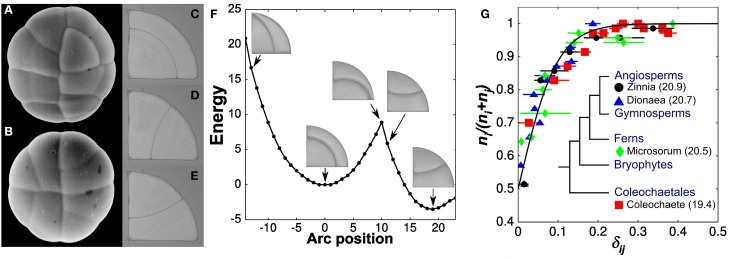Figure 1.
Stochastic rule for the selection of a division plane. (A,B) Two glandular trichomes showing the quadrant cells studied by Berthold and Thompson. Each circular gland divides twice across its center to produce four quadrant cells. These quadrant cells can undergo three types of division, all of which are predicted by soap films (C–E). The division plane with least area is anticlinal, forming a wedge cell and a triangular cell (D,E). The other division is periclinal (C) and corresponds to a local minimum of surface area or surface energy in the case of soap bubbles (F). (G) The proportion of cells adopting the optimal division plane i as a function of the relative area difference, δij, in its favor. The solid line is the best fit of the experimental data with a probability function of the form (1 + exp(-βδij))−1. Values of β computed for individual species are also reported (inset) (modified from Besson and Dumais, 2011).

